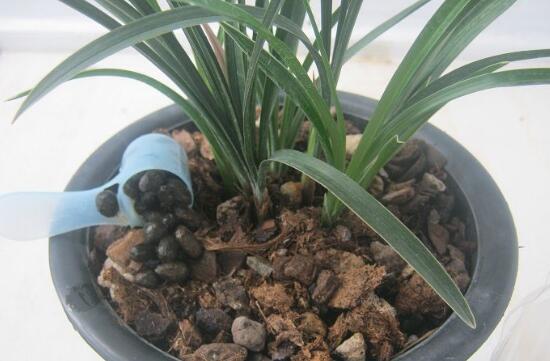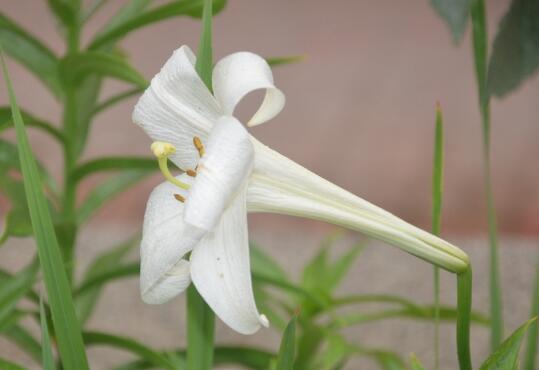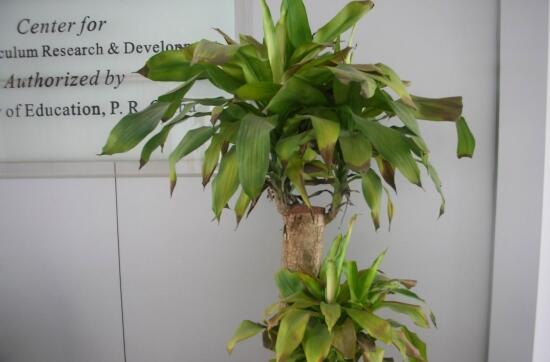What about the growth of orchid grass? control of common diseases and insect pests of orchid grass / spraying of 2 insects and 3 diseases
Orchid grass, also known as orchid, is called "four gentlemen in flowers" with plum, bamboo and chrysanthemum. It is a beautiful ornamental flower. However, bluegrass is a herbaceous plant, in the case of artificial cultivation, it is easy to grow worms to get sick, so what about bluegrass worms? The following are several kinds of orchid common pest control, follow the editor to have a look!
What about the orchid worms? spray them with medicine.

Because bluegrass is powerful, it is potted at home by many flower friends. However, in the process of raising orchid grass indoors, due to improper maintenance and unclean ambient air, it is prone to several diseases and insect pests: red spider, shell insect, black spot, white silk disease, and anthrax, which will affect the normal growth of the plant. as soon as it is found, it should be sprayed immediately.
II. Disease and pest control of bluegrass
1. Red spider
In indoor cultivation of orchid grass, if the ventilation condition is poor, orchid grass will often suffer from red spider harm. Although the insect is small, it can absorb nutrients from the leaves with a sharp needle, thus affecting the normal growth of the variable-leaf wood.
Prevention and control methods: in daily maintenance, we should observe more orchid grass. Once red spiders are found, we should spray immediately to control them. The medicament can choose 1000 times dimethoate and 1000 times triclofenac EC, once every 5-7 days, 2-3 times in a row.
2. Scale insects
In the case of high temperature and humidity and poor air flow, bluegrass is also easy to develop shell insects. The insect often occurs in May and uses mouthparts to pierce the leaves to suck juice, resulting in yellowing of bluegrass leaves and death of plants in severe cases.
Control methods: when there are few shell insects, alcohol can be used to gently wipe the diseased plants repeatedly, and the effect is excellent; when there are many shell insects, it should be timely sprayed with 1000 times of omethoate or 1000 times of dichlorvos for antiseptic, and sprayed every 7 times every 10 days, spraying for 3 times in a row can be effective.
3. Black spot
In addition to growing insects, bluegrass can also get sick, of which the most common disease is black spot. At the beginning of the disease, the diseased leaves will appear round black-brown spots about 2-3 mm in diameter, and then will slowly expand and increase, seriously harming the whole tissue, resulting in poor plant growth.
Prevention and treatment methods: the disease mostly occurs in June, we should observe more, when the above symptoms are found, cut off and burn all the seriously damaged leaves, and timely spray 40% carbendazim 800 times solution or 65% Dysen zinc 400-500 times solution for prevention and treatment.
4. White silk disease
Among the common diseases and insect pests of bluegrass, white silk disease is also a kind of disease that has to be prevented. The disease mostly occurs in the plum rain season, mainly harming the stem base and roots of bluegrass, resulting in purple-brown spots on the leaves, followed by obvious white mycelium, and in severe cases, the plant withered and eventually died.
Prevention and treatment methods: after the above diseases are found, fungicides such as carbendazim, Bordeaux solution, Baume sulfur mixture and other fungicides are sprayed on the stem base and substrate in time, or after the disease, the basin soil with bacteria is removed directly and sprinkled with pentachloronitrobenzene powder or lime.
5. Anthrax
In the hot and humid season, especially in the hot and humid plum rain season, bluegrass is prone to anthracnose. The disease can cause small brown patches on bluegrass leaves, then expand into a circular or oval shape, and in severe cases, the whole plant is damaged.
Prevention and treatment: after it is found that the plant is suffering from anthracnose, 50% methyl topiramate wettable powder 800-1500 times can be sprayed once in 7-10 days, and then supplemented with 1% Bordeaux solution, once every semimonthly, the disease can be basically cured.
How to raise potted orchid grass, how to cultivate bluegrass and matters needing attention.
Bluegrass, known as "the first fragrance", has delicate fragrance, evergreen leaves and elegant posture. It is a very popular indoor potted plant in recent years and is deeply loved by flower friends. In life, many people want to raise a pot of bluegrass, then how to raise potted bluegrass? The following are the breeding methods and precautions of bluegrass carefully arranged by the editor, which are very detailed. Friends who want to raise them must take a look at them.
First, how to raise potted bluegrass and understand the habits
Bluegrass likes a warm, humid environment, it is more shady, avoid strong light, not cold-resistant, so how to raise potted bluegrass? We should put bluegrass in bright astigmatism, avoid direct sunlight, water properly during daily maintenance, keep the basin soil slightly wet, and take warm measures in winter. As for cultivated soil, it is best to choose humus soil with loose air permeability and good drainage.
2. Culture methods and matters needing attention of bluegrass
1. Soil
How to raise bluegrass, we should first choose potted soil. Nowadays, flower friends' bluegrass potted plants are basically purchased online and are very cheap. As a result, the soil is very cheap, normal conservation can ensure plant growth, but if you want the beauty of orchid flowers, it is best to re-choose the soil.
Soil selection: according to the growth habits of bluegrass, it likes humus soil with loose air permeability and good drainage. In this regard, the editor recommends that we use 7 parts of rotten leaf soil, 2 parts of perlite and 1 part of river sand mixed soil.
2. Lighting
Bluegrass likes shade and is afraid of bright light, so in the cultivation method of bluegrass, light is something that we need to pay attention to. When breeding indoors, bluegrass should be placed on a balcony with bamboo shade, shaded from 9: 00 a.m. to 6: 00 p.m. in strong light, and not shaded at other times. In winter, the light is weak, so you can put it in a good light astigmatism place to maintain.
3. Temperature
How to raise bluegrass, timely adjustment of the temperature is also very important. Bluegrass likes a warm environment and is not resistant to cold. When the temperature is low in winter, it is important to move it indoors. How to raise bluegrass and adjust the temperature timely is also very important. When the temperature warms up gradually in spring, bluegrass can be slowly moved to the courtyard or balcony.
4. Watering
Watering is necessary for raising plants, and watering is a very important part in the breeding method of bluegrass. Bluegrass likes a humid environment, daily maintenance needs to keep the basin soil slightly wet. In spring and autumn, bluegrass should be watered every 2-3 days; in summer, when the temperature is high, bluegrass should be watered once or twice a day; in winter, the temperature is low, generally watering every 5-7 days.
Note: to water bluegrass, we need to be careful not to splash water on the leaves, so as not to appear black spots, affecting the ornamental effect; in addition, watering can not be more nor less, it is best not to dry in autumn and not wet in winter. In addition, if it is open-air farming, bluegrass can be caught in a little light rain, but pay attention to avoid mildew, showers or continuous rain.
5. Fertilization
How to raise bluegrass? After watering, let's talk about fertilization, it is also indispensable in the growth process of bluegrass. Bluegrass likes fertilizer, and organic fertilizer should be applied every 10 days during the growing period, such as farmers. In addition, when applying fertilizer to bluegrass, it requires a small amount, clear and thin, and really apply thin fertilizer diligently.
6. Pruning
In the process of cultivating bluegrass, timely pruning is also very important. In the course of its growth, we should constantly cut off the withered and yellow old leaves and the leaves of diseases and insects to facilitate ventilation. In addition, when the last flower on the orchid inflorescence blooms for a week, it should be cut three centimeters away from the basin, so as not to consume too much nutrients and affect flowering in the coming year.
7. Prevention of diseases and insect pests
In the process of cultivating bluegrass, bluegrass is easy to get sick because of improper maintenance, high air humidity, lack of light, poor ventilation and so on. In order to prevent the occurrence of this phenomenon, in addition to the proper control of the dry and humidity of the basin soil, we should also master the prevention and control of diseases and insect pests of bluegrass and spray them in time after discovering diseases and insect pests.
- Prev

What to do with the growth of insects in musk lilies? control of diseases and insect pests of musk lilies / 2 insect pests 2 diseases
When we cultivate musk lilies, the last thing we want to encounter is diseases and insect pests. This kind of problem is very harmful to the plant, which will not only affect the beauty of the plant type, but also lead to plant death. So what if musk lilies have worms? How to control diseases and insect pests of musk lily
- Next

Will Brazilian iron trees grow worms? Brazilian iron tree pest control / anthrax spray
Brazilian iron tree, which has become popular in recent years, is a beautiful foliage plant that has appeared in many people's families. However, with the increase in the number of people raising Brazilian iron trees, and some problems, such as more diseases and insect pests, will Brazilian iron trees grow worms? The following are several kinds of Brazilian iron tree pest control
Related
- Fuxing push coffee new agricultural production and marketing class: lack of small-scale processing plants
- Jujube rice field leisure farm deep ploughing Yilan for five years to create a space for organic food and play
- Nongyu Farm-A trial of organic papaya for brave women with advanced technology
- Four points for attention in the prevention and control of diseases and insect pests of edible fungi
- How to add nutrient solution to Edible Fungi
- Is there any good way to control edible fungus mites?
- Open Inoculation Technology of Edible Fungi
- Is there any clever way to use fertilizer for edible fungus in winter?
- What agents are used to kill the pathogens of edible fungi in the mushroom shed?
- Rapid drying of Edible Fungi

